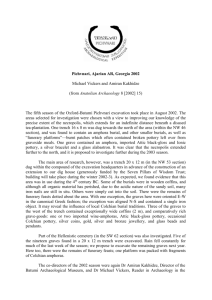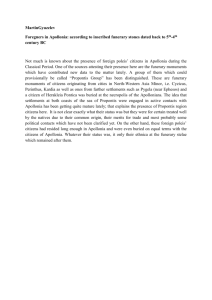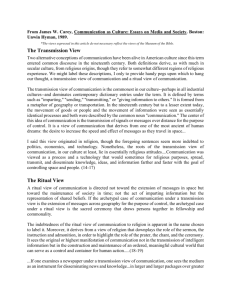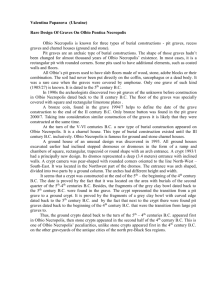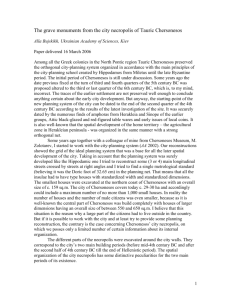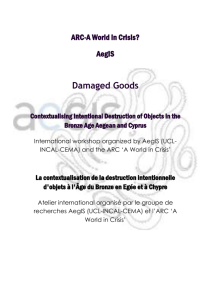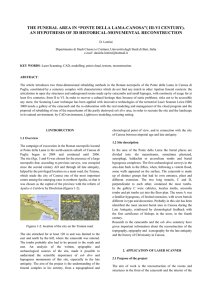Pottery assemblage of the ritual fireplaces in the necropolis of
advertisement
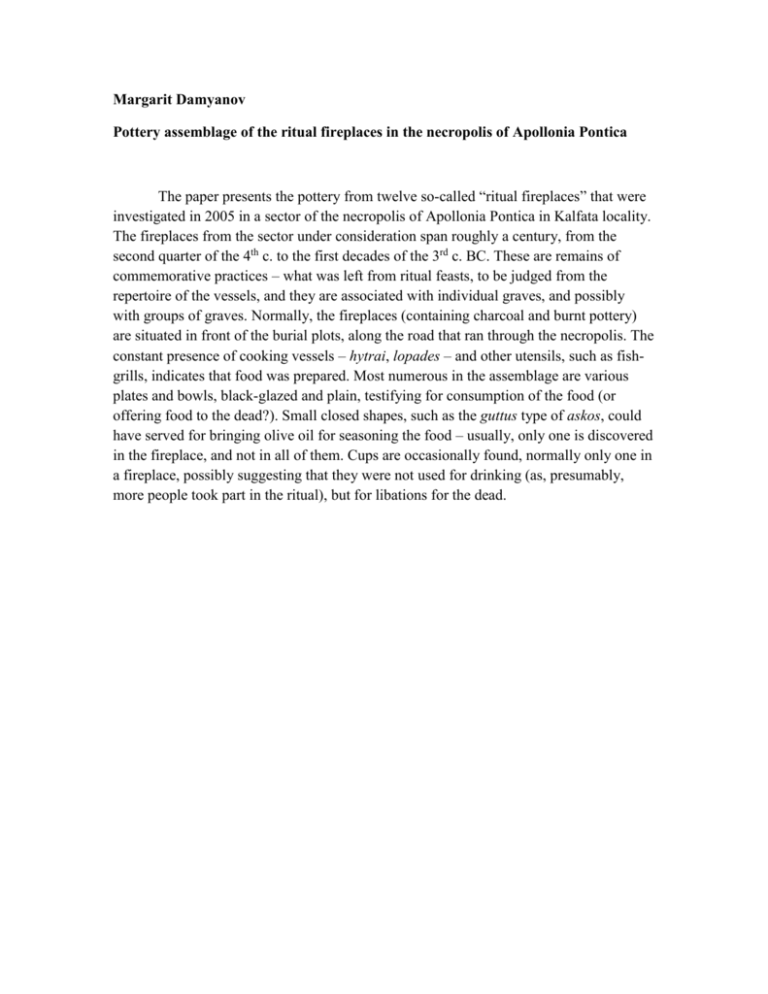
Margarit Damyanov Pottery assemblage of the ritual fireplaces in the necropolis of Apollonia Pontica The paper presents the pottery from twelve so-called “ritual fireplaces” that were investigated in 2005 in a sector of the necropolis of Apollonia Pontica in Kalfata locality. The fireplaces from the sector under consideration span roughly a century, from the second quarter of the 4th c. to the first decades of the 3rd c. BC. These are remains of commemorative practices – what was left from ritual feasts, to be judged from the repertoire of the vessels, and they are associated with individual graves, and possibly with groups of graves. Normally, the fireplaces (containing charcoal and burnt pottery) are situated in front of the burial plots, along the road that ran through the necropolis. The constant presence of cooking vessels – hytrai, lopades – and other utensils, such as fishgrills, indicates that food was prepared. Most numerous in the assemblage are various plates and bowls, black-glazed and plain, testifying for consumption of the food (or offering food to the dead?). Small closed shapes, such as the guttus type of askos, could have served for bringing olive oil for seasoning the food – usually, only one is discovered in the fireplace, and not in all of them. Cups are occasionally found, normally only one in a fireplace, possibly suggesting that they were not used for drinking (as, presumably, more people took part in the ritual), but for libations for the dead.

